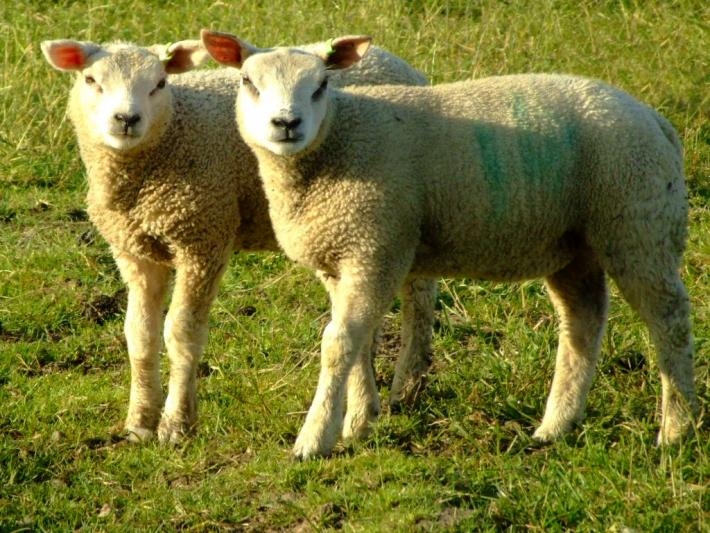
To survive in dry summer areas like Marlborough, farmers need to have a flexible low cost system that maximises production when feed conditions allow.
The best growth rates for lambs are on the mother so good feed in early lambing and into late spring is needed to maximise growth rates.
450 gms per day for singles and 300gms a day for twins are possible if feed conditions allow and that will have animals to be at marketable weights at weaning .
Marlborough farmers were encouraged to get more lambs out the gate at weaning when a visiting scientist spoke at Beef + Lamb's recent monitor farm programme update. AgResearch Lincoln scientist Tom Fraser told about 30 farmers that single lambs could tip the scales at 40 kilograms, and twin lambs 29kg, by weaning if conditions were right.
Lambs sold at weaning were the most profitable, as they were out the gate before extra costs began, Mr Fraser said. It was best to encourage lamb growth during lactation, he said. Good quality and duration of colostrum was key to growth during lactation, as was ongoing milk volume, so it was especially important that ewes had plenty of feed in late winter and early spring, Mr Fraser said. By late spring, the quality of feed was most important because after three weeks for twins and six weeks for singles, milk alone was not enough to ensure good growth.
If all the ingredients – pasture cover and quality, animal health and climate – were at 100 per cent, growth rates of 450 grams a day for single lambs and 300g for twins were possible, he said. However, a more realistic rate was 350g for singles and 250g for twins, which would result in weaning weights of 40kg and 29kg respectively.
And a Lake Grassmere family in the heart of dry Marlborough, prove that farming can be profitable in this region, if the farming system and plants are adapted to the conditions.
A Lake Grassmere family who transformed their struggling, drought-prone sheep and beef farm into a sustainable and profitable business have been named one of four finalists in the South Island Farmer of the Year competition. The Avery family – Doug and Wendy, their son Fraser and daughter-in-law Shelley – have already been through two rounds of judging, including a farm inspection, in the Lincoln University Foundation competition. A third farm visit will take place before Doug Avery makes a public presentation at Lincoln on November 5.
He said on Friday he was "pretty pleased" about the result, but would not be resting on the family's laurels. He owed it to the many people who had helped with the farm's turnaround, including his family, staff, contractors, the Marlborough Research Centre, the Marlborough District Council, the Landcare Trust and Niwa, to go all out. "All sorts of people have plugged in their energies to create a much better vision here ... I'll certainly be doing my best for this province and everyone that's pushed us this far."
The Averys began changing the way they farmed in 1998, converting to lucerne, creating wetlands and planting native trees. Year-on-year profits have increased, and the farm is now home to almost 3000 sheep and more than 500 cattle. "Things were desperate in the late '90s and we're anything but desperate now ... we're punching out numbers that are up there with dairying. Sheep and beef is back."
A big part of the plan was to "attach sustainability to long-term profitability", he said. "We're not just here to suck out what we can as quickly as possible. We're here with the 50-year and the 100-year vision."
We welcome your comments below. If you are not already registered, please register to comment.
Remember we welcome robust, respectful and insightful debate. We don't welcome abusive or defamatory comments and will de-register those repeatedly making such comments. Our current comment policy is here.